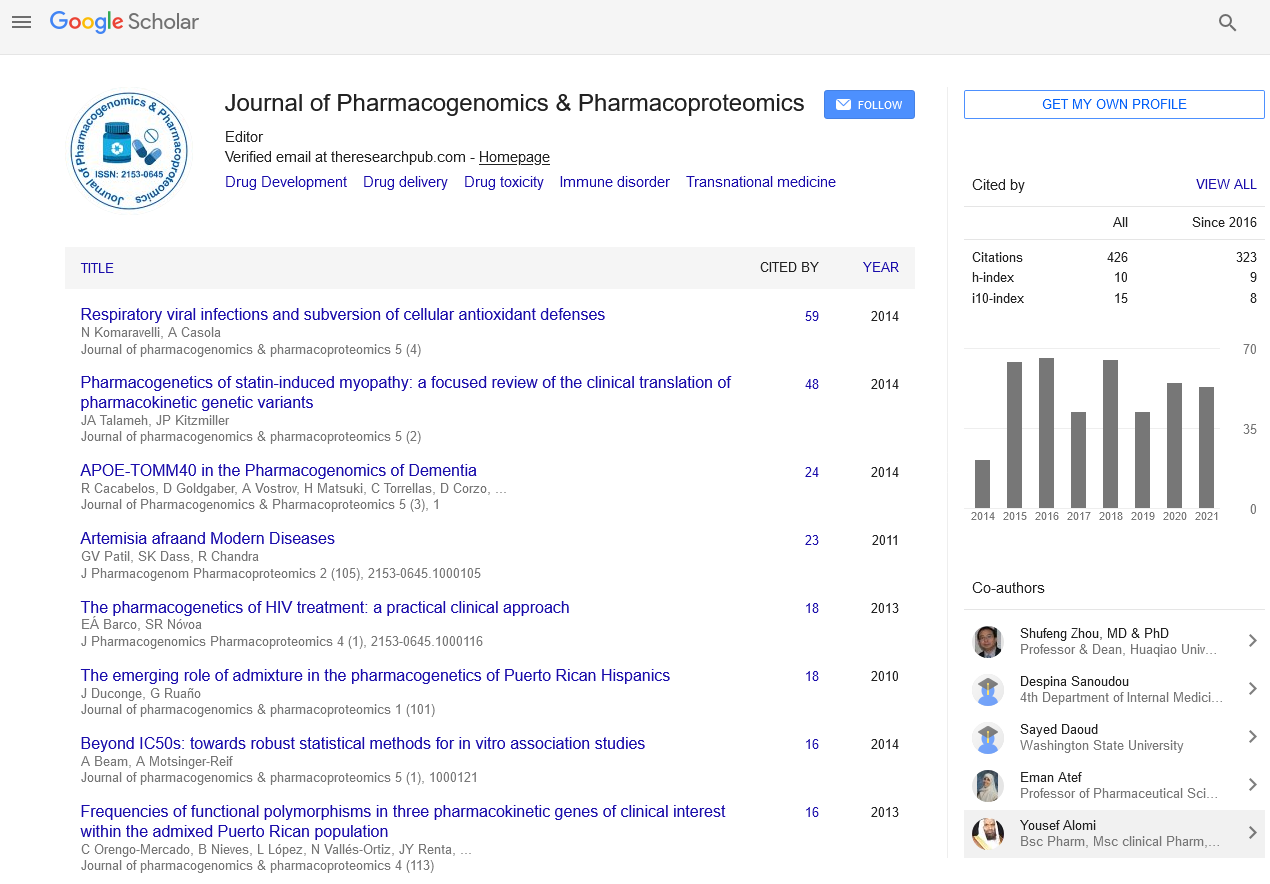Indexed In
- Open J Gate
- Genamics JournalSeek
- Academic Keys
- JournalTOCs
- ResearchBible
- Electronic Journals Library
- RefSeek
- Hamdard University
- EBSCO A-Z
- OCLC- WorldCat
- Proquest Summons
- SWB online catalog
- Virtual Library of Biology (vifabio)
- Publons
- MIAR
- Euro Pub
- Google Scholar
Useful Links
Share This Page
Journal Flyer

Open Access Journals
- Agri and Aquaculture
- Biochemistry
- Bioinformatics & Systems Biology
- Business & Management
- Chemistry
- Clinical Sciences
- Engineering
- Food & Nutrition
- General Science
- Genetics & Molecular Biology
- Immunology & Microbiology
- Medical Sciences
- Neuroscience & Psychology
- Nursing & Health Care
- Pharmaceutical Sciences
Waist circumference to height ratio and coronary artery calcification
5th International Conference on Predictive, Preventive and Personalized Medicine & Molecular Diagnostics
December 01-02, 2016 Valencia, Spain
Jeong-Ah Kim, Sung-Goo Kang, Sang-Wook Song, Bora Shin and Yeon-kyung Choi
Department of Family Medicine, colleage of medicine, The Catholic University of Korea, South Korea
Posters & Accepted Abstracts: J Pharmacogenomics Pharmacoproteomics
Abstract:
Background: Many studies have demonstrated that waist-to-height ratio (WHtR) correlates with risk factors of coronary artery disease (CAD) better, than the body mass index (BMI). Coronary artery calcification (CAC) is an independent risk factor of atherosclerotic heart disease. However, the association between WHtR and coronary artery calcification score (CACS) still need to be elucidated. Objective: The purpose of this study was to investigate the relationship between WHtR and CACS in healthy adults. Method: A total of 1111 adults without histories of cardiovascular disease who visit the Health Promotion Center at the University Hospital were included in this study. All subjects were measured CACS by multi-detector computed tomography (MDCT). Results: Participant with a CACS>0 had a greater WHtR than those with a CACS=0 (0.535±0.006 vs. 0.517±0.005, P<0.001). After adjusting for risk factors that affect CAC, WHtR represented an independent predictor of presence of CAC (odd ratio: 1.04, P=0.019, 95% CI: 1.01-1.07). Male sex and systolic blood pressure associated with a 2.53 and a 1.02-fold increase in CAC, respectively (P<0.001, 95% CI: 1.53-4.19; P=0.007, 95% CI: 1.01-1.04). Conclusion: In this study of adults without heart disease, WHtR was an independent predictor of CAC. These results suggest that WHtR may be useful marker of CAD.
Biography :
Email: rlavendar@naver.com


